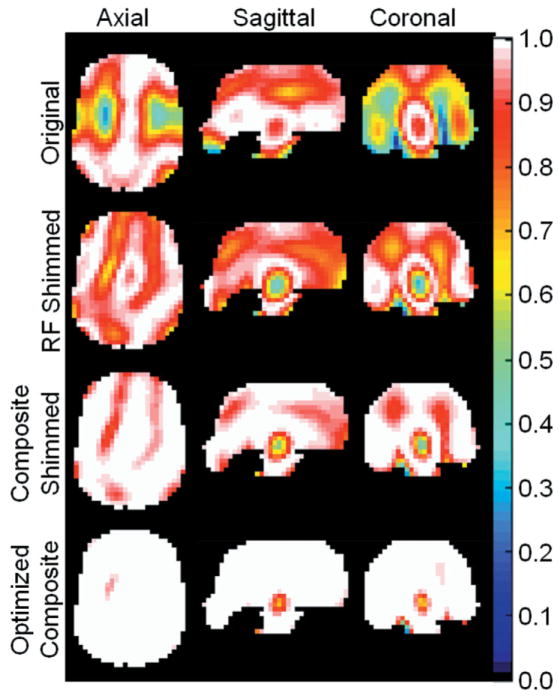FIG. 2.
Magnitude of the transverse component of the magnetization vector Mt (the maximum possible value is 1.0 throughout the brain, and zero elsewhere) on axial, sagittal, and coronal slices through the middle of the brain for four different cases: 1) after a single RF pulse with an array having a current distribution similar to that in a typical volume coil (“original”); 2) after a single pulse with an RF-shimmed transmit array (“RF shimmed”); 3) after a two-pulse composite pulse with a transmit array in which current magnitudes and phases of the first pulse are equal to those in case 2, and those of the second pulse are merely phase shifted by 90° (“composite shimmed”); and 4) after a two-pulse array-optimized composite pulse with a transmit array in which current magnitudes and phases in both pulses have been optimized to produce the most homogeneous Mt at the end of the second pulse (“optimized composite”). It can be seen that Mt becomes both more homogeneous and stronger throughout the brain in the progression shown. The optimizations were performed for the whole brain volume simultaneously, and results are shown for 600 MHz (14T).

